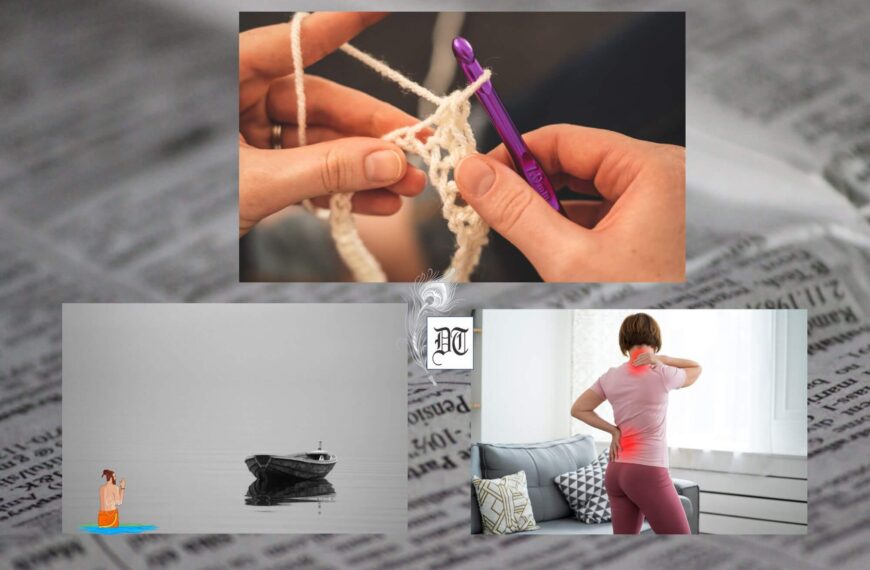Our yoga expert, Navodita, tells us about three asanas this week. She dwells with Sarvanga Asana and its variations. Sarvanga Asana is also known as the Mother of all asanas. Since, healthy blood is allowed to circulate around the neck and chest, persons suffering from breathlessness, palpitation, asthma, bronchitis and throat ailments get relief. It also removes common colds and other nasal disturbances. Those suffering from hypertension, irritation, shortness of temper, nervous breakdown and insomnia are also relieved. Hala Asana rejuvenates the abdominal organs and helps to relieve backache. Cramps in the hands are cured. People suffering from stiff shoulders and elbows, lumbago and arthritis of the back find relief in this asana. Pain in the stomach due to wind is also relieved and lightness is felt immediately. It’s good for people with a tendency for high blood pressure. Supta Kona Asana tones the legs and helps to contract the abdominal organs. Read more in the weekly column, exclusively for Different Truths.
Last time we made you do the Salamba Sirsasana and taught you how to do the three Bandhas. Practice these asanas carefully and with precision. Today, we will be telling you about more such asanas, including the Sarvanga Asana and its variations.
Salamba Sarvanga Asana
Salamba means supported or propped up. Sarvanga means the entire body or all the limbs. In this asana the whole body benefits from the exercise, hence the name.
Lie flat on the back on the carpet keeping the legs stretched out, tightened at the knees. Place the hands by the side of the legs, palms down. Take a few deep breaths. Exhale, bend the knees and move the legs towards the stomach till the thighs press it. Take two breaths. Raise the hips from the floor with an exhalation and rest the hands on them by bending the arms at the elbows. Take two breaths. Exhale, raise the trunk up perpendicularly supported by the hands until the chest touches the chin. Only the back of the head and the neck, the shoulders and the backs of the arms up to the elbows should rest on the floor. Place the hands in the middle of the spine and take two breaths. Exhale and stretch the legs straight with the toes pointing up. Stay in this position for about five minutes with even breathing. Exhale and gradually slide down, release the hands, lie flat and relax.
Sarvanga Asana is also called the Mother of asanas. It is a panacea for most common ailments. This asana has a direct effect on the glands and helps them to function properly. Sarvanga Asana does this for the thyroid and parathyroid glands, which are situated in the neck region, since due to the firm chin lock their blood supply is increased. Further, since the body is inverted the venous blood flows to the heart without any strain by force of gravity. Healthy blood is allowed to circulate around the neck and chest. As a result, persons suffering from breathlessness, palpitation, asthma, bronchitis and throat ailments get relief. Continued practice of this asana removes common colds and other nasal disturbances. Due to the soothing effect of the pose, those suffering from hypertension, irritation, shortness of temper, nervous breakdown and insomnia are relieved.
Sarvanga Asana maybe followed by some of its variations like the Hala Asana.
Hala Asana
Hala means a plough, the shape of which this posture resembles, hence the name.
Do Salamba Sarvanga Asana with a firm chin lock. Release the chin lock, lower the trunk slightly, moving the arms and legs over the head and resting the toes on the floor. Tighten the knees by pulling up the hamstring muscles at the back of the thighs and raise the trunk. Place the hands in the middle of the back and press it to keep the trunk perpendicular to the floor. Stretch the arms on the floor in the direction opposite to that of the legs. Hook the thumbs and stretch the arms and legs. Interlock the fingers and turn the wrists so that the thumbs rest on the floor.
Stretch the palms along with the fingers, tighten the arms at the elbows and pull them from the shoulders. The legs and the hands are stretched in opposite directions and this stretches the spine completely. While interlocking the fingers, it is advisable to change the interlock. Remain in the attainable pose from one to five minutes with normal breathing.
An important effect of Hala Asana is that the abdominal organs are rejuvenated due to contraction. The spine receives an extra supply of blood due to the forward bend and this helps to relieve backache. Cramps in the hands are cured due to interlocking and stretching the palms and fingers. People suffering from stiff shoulders and elbows, lumbago and arthritis of the back find relief in this asana. Pain in the stomach due to wind is also relieved and lightness is felt immediately. The pose is good for people with a tendency for high blood pressure. If they perform Hala Asana first and then Sarvanga Asana, they will not feel the rush of blood or the sensation of fullness in the head.
Yet another asana that helps one relieve of headaches is Supta Kona Asana.
Supta Kona Asana
Supta means lying down and kona an angle. It is a variation of Hala Asana in which the legs are spread apart.
Stay in Hala Asana, stretch the legs straight and spread the legs as far apart as you can. Pull the trunk up and tighten the knees. Hold the right toe with the right hand and the left toe with the left one. Keep the heels up. After gripping the toes, move the dorsal region of the spine further up and extend the hamstring muscles. Stay in the pose for about 20 to 30 seconds with normal breathing.
This pose tones the legs and helps to contract the abdominal organs.
After such a tough Yoga workout, end with some basic pranayama techniques like the Nadi Shodhana. End your day’s work out with Sakshi Dhyana and positive thoughts:
- The natural desire of every life is to have comfort, to get into a place where there is no misery, no sorrow. The goal of human life is to move towards such perfection. That can be achieved if one improves oneself as a part of the larger Cosmos.
- The five senses have limited capacity but the mind has unlimited desires. There is an imbalance between the desire to enjoy and capability of the senses to enjoy. Then conflict arises. You feel miserable. There is nothing wrong to enjoy the five senses, to enjoy the pleasures of life but to give it more importance than life itself is disastrous.
- The beauty of spirituality is that you don’t condemn. Don’t dismiss the believer and don’t dismiss the atheists either. It is people in extremes who keep condemning each other. Experience is the best educator. When you are encountering death, what else can be more powerful than death itself educating you!
©Navodita Pande
Photos from the Internet.
#HolisticHealth #Asana #Yoga #HealthAndWellness #SalambaSarvangaAsana #HalaAsana #SuptaKonaAsana #NadiShodhana #SakshiDhyana #Rejuvenates #Backaches #Hypertention #Irritation #Death







 By
By
 By
By

 By
By